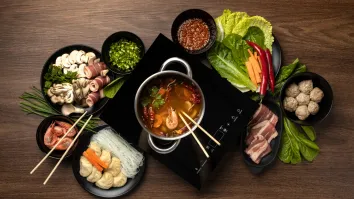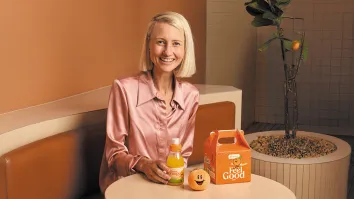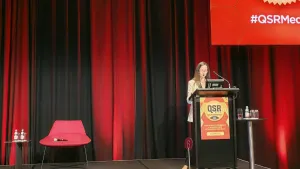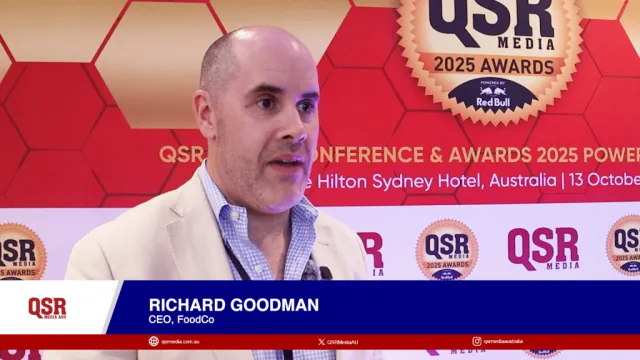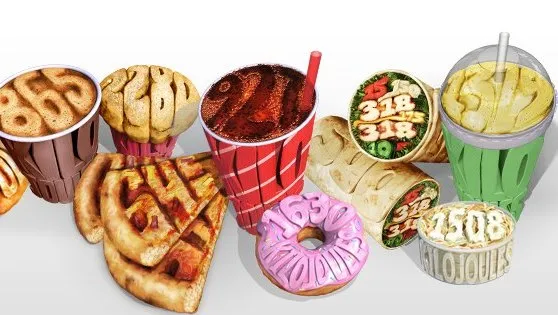
Pizza Hut, QSRH and others reveal the impact of kJ labelling
The results will surprise you.
In 2011 the New South Wales (NSW) Government rolled out new food labeling laws under the Fast Choices initiative aimed at curbing obesity among Australians. Fast food chains were required to display kilojoule (kJ) content and additional nutritional information on their menu boards. Starting February 2013, supermarkets were also mandated to show the kJ content on their ready-to-eat meals.
Kilojoule is a unit of energy, with the average Australian adult consuming 8,700 kJ a day through food and drinks. To help Australians watch their kJ intake and avoid binge-related obesity, the NSW Government also launched the 8700 consumer awareness campaign that pushes Australians to read the newly available kJ food labels in restaurants and supermarkets.
QSR Media asked several food retail brands how the new nutritional labeling laws and 8700 campaign have affected their businesses. Most report no significant change in buying behavior among their customers, but some have had to incur increased costs to comply with the legislation while others created new meal combos to accommodate diners who may want to lower their kilojoule consumption.
Higher Business Costs
Pizza Hut said it has incurred high costs in order to comply with the new laws. “The introduction has been a very costly program,” said Graeme Houston, Managing Director at Pizza Hut.
“The amount of funds required to test products in order to provide the kilojoule data required is very high and it is difficult to execute effectively - every small change to our menu or specification has to be evaluated and potentially retested and then menu boards reproduced at significant cost to our business.”
It did not help as well that the 8700 campaign, which championed awareness for the relatively obscure kJ, lacked ample business support.
“The campaign could have been accompanied with better support and program training offered for business to educate staff. This would have assisted in increasing customer awareness at a store level. ” said Houston.
“The decision to use kJs instead of calories has been confusing for many customers as was the decisions around having to display total KJs for a pizza or a pack when we know this is not a customer normally eats. It is very hard for them to evaluate and tie back to traditional calorie counting programs,” he added.
Instead of making things complicated, regulators should keep their approach simple, said David Ovens, Chief Marketing Officer at QSRH, which operates the Red Rooster and Chicken Treat & Oporto brands.
“Keep the information and execution as simple as possible so that the greatest number of people, both customers and employees, will understand and appreciate the changes.”
8700 Campaign
Government nutrition experts though defended the goals of the 8700 campaign, insisting that consumers tend to undercount the kJ content on their food. A recent NSW Food Authority research showed 75% of people who at fast food outlets “grossly underestimated” their kJ intake.
The campaign stresses that consumers can easily stay within their kJ diet if only they pay attention to the newly available kJ and nutritional information. The official 8700 campaign website even provides a kJ diet calculator to help people figure out their recommended daily intake.
Flexible Combo Options
With the 8700 campaign going into full swing and more Australians taking kJ into account, Donut King has started to offer more flexible combo options to accommodate customers who may want to cut down their kJ intake.
“We have made changes to the way customers can order our products by allowing them to customize their shakes, sundaes and hot dogs so that they can make choices to decrease the kJ count of their order if they wish,” said Sheridan Burke, Marketing Manager at Donut King.
“We now have more flexible combo options that allow customers to bundle their donuts or hot dogs with water or other low kJ products to lower their overall kJ intake,” she added.
Burke insisted there has been no change in what its customers are purchasing since the brand’s donuts are viewed as a “treat food.” She did reveal that customers have begun to show more interest in Donut King ingredients, where these come from, and whether these contain gluten, nuts or dairy.
Fellow fast food heavyweight Hungry Jack’s shared that the kJ count labeling initiative “has had some impact on purchasing decisions, however this is not commonplace.” The spokesman added that nutrition awareness has also risen among the general public, a fact that has probably convinced Hungry Jack’s to move towards an overall healthier menu line-up.
“Major reductions in sodium, fat and sugar levels have been achieved across Hungry Jack’s menu including a substantial 80% reduction in the saturated fat levels of fried products; a 59% drop in the sugar levels in buns; and a minimum 30% reduction in the sodium levels of chicken products.”
Elevated Nutritional Benefits
One of the few who reported a positive business impact from the new kJ initiatives was SumoSalad, which positions itself as the healthy fast food choice.
“The legislation has elevated SumoSalad’s nutritional benefits as comparatively we do outperform many of our competitors in this arena,” said Luke Baylis, Co-founder and Managing Director of SumoSalad.
With the imposition of kJ counts, the typical SumoSalad customer who Baylis described as possessing a high level of interest in nutrition, can compare fast food fare with SumoSalad offerings which are labeled to impress more scrutinizing health buffs with content data on fat, carbohydrates, GI, salt, cholesterol, sugar, protein and fiber.
8700 Campaign a “Success”
Despite some QSRs shrugging off the impact of the 8700 campaign, suggesting that it has not changed fast food ordering habits, NSW Minister for Primary Industries Katrina Hodgkinson insisted that campaign has already seen positive impact and success especially in spreading awareness.
“Research shows there has been an improvement in the public’s awareness of the average daily kilojoule intake. Figures show a rise in the proportion of the population able to identify the average as being about 8700 kJ,” said Hodgkinson.
“Success is also evident in consumer response. The research showed the campaign was perceived as informative, relevant and necessary,” she added.
SumoSalad Managing Director, Luke Baylis echoed this assessment. “The new legislation has not necessarily changed overall behaviors but it has certainly increased awareness of kilojoule consumption. Broadly, consumers are now better informed to make the right decisions.”
But QSRH’s Ovens said the displayed kJ and nutritional data have best benefited those who already had an “above average” interest in such information.
Next Steps: More Legislation?
With the NSW Government seeing success in its kJ labeling initiative and the growing possibility of a fast food tax, the question now is whether new measures will be issued to keep the anti-obesity momentum going. But Hodgkinson said the NSW Parliament is taking a more cautious stance despite calls from health advocates to include fat and salt content labeling.
“A review of the Fast Choices legislation tabled to the NSW Parliament recommended that any decision to extend the labeling requirements to include fat and salt be deferred to allow the initiative in its current form to take further effect,” said Hodgkinson.
Some QSRs though could not help but disagree with the notion of adding even more nutritional information on their already jam-packed menu boards.
“We welcome initiatives that provide consumers with information to enable them to make more informed decisions when it comes to their well-being but do not believe that further legislation requiring additional information to be contained on menu boards is an appropriate solution,” said Pizza Hut’s Houston.
“There are other effective avenues for providing consumers with this type of information,” added Houston, citing how Pizza Hut provides nutritional and allergen information in its stores and website.
On the other hand, SumoSalad welcomed the prospect of more legislation in this area.
“kJ is just one aspect of nutrition,” said Luke Baylis, Managing Director at SumoSalad, noting that some consumers might still make uninformed decisions without knowing that the same meals with identical kJs are not as equally nutritious.
“Some customers often query that some of our menu items might have a similar kilojoule count as an unhealthy fast food option. However, this does not take into account the other nutritional benefits from our products i.e. protein from lean meats, low GI versus high GI carbohydrates, essential vitamins and minerals from vegetables, etc.
“We would like to see a more holistic approach to the education of nutrition with consumers.”


